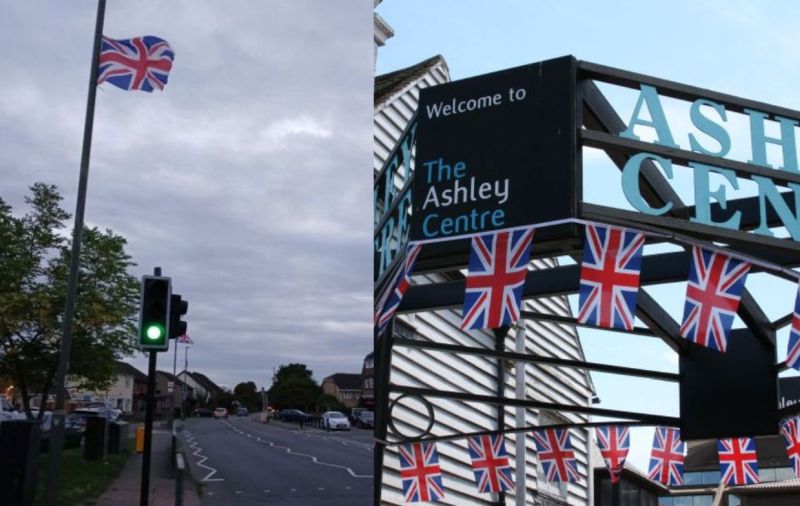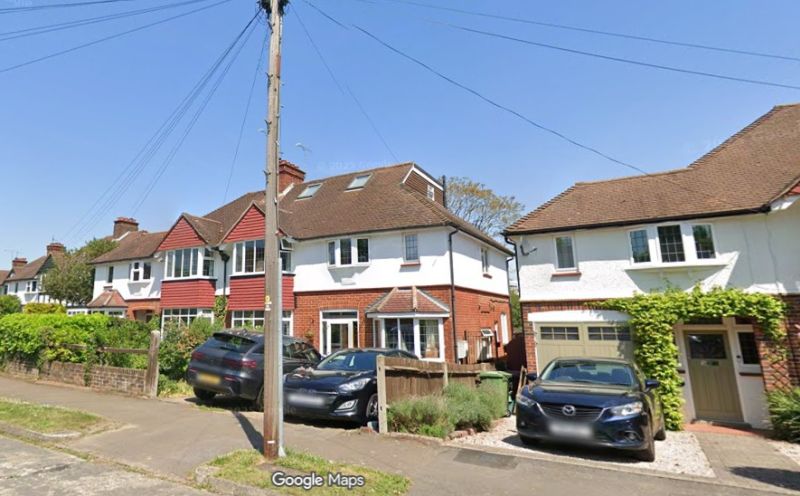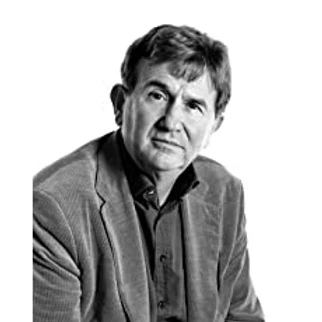Epsom Author Spotlight: Roger Cox
The Hanford Trilogy

Profile
I am a British writer living in the UK who recently completed his first novel, Shadow on the Sun’. There was a follow-up, Deep Earth (published in 2015), with a third, much longer book set to be completed in 2019. The aim is for the three books to complete a trilogy and in its arc, the trilogy is aimed at telling a further story necessary to complete the saga. Since moving to London 40 years ago as a journo and PR consultant I have become a ‘novel writer’. Years of writing on various non-fiction matters such as North Sea Oil and industrial heating systems led me into novel writing. One has to bear in mind during this time I had to earn a earning so as to support two ex-wives and our various daughters.
The Manhattan Project

Picture: Manhattan Project members – March 1940 meeting at Berkeley, California: Ernest O. Lawrence, Arthur H. Compton, Vannevar Bush, James B. Conant, Karl T. Compton, and Alfred Loomis / By U.S. government – Public Domain
Much of Shadow takes place in the United States, for two reasons. The first is I had travelled extensively in this country. The second is I had always been fascinated by the American ‘Manhattan Project’, the Second World War project, named after the Manhattan Engineering District its founding location, aimed at beating the Germans’ attempts to build an atomic bomb.
That the US was successful is evidenced by the abrupt ending of the war. But in the process a terrible legacy was created. Not only with the nigh on 200,000 Japanese people killed almost immediately with the atomic bomb droppings, but in the radioactive detritus that followed on for nearly seventy years affecting much of US, as well as obviously, Japanese land.
Part of the US legacy has been the awesome nuclear pollution affecting both the Columbia river, American’s third largest and the plight of the Downwinders, and the land surrounding them. The Downwinders are the people who lived “downwind” of nuclear blasts, breathing the pollution it created, often dying early, and who spent years claiming compensation.

Picture: The Mutually Assured Destruction doctrine graphically illustrated / Schoolhistory.org.uk
But perhaps an even worse is legacy is the 60,000 US Cold War atomic weapons the US built as part of the mistaken belief of forcing the Soviets to abandon either the MAD doctrine – Mutually Assured Destruction – if ever the Soviets attempted to reach nuclear stalemate with the US.
The worst polluted place in the US has been- and still is – the Hanford Indian Reservation in Washington State. It is 600 square miles of now badly polluted desert. This stems from Hanford eventually being the site of the eight nuclear reactors necessary for producing the bombmaking plutonium the Atomic Energy Commission (AEC) believed it needed to meet US Government nuclear goals.
But making plutonium is no easy business. The clean-up bill to shutter eight nuclear reactors and the mess they have left behind was estimated at £130 billion in 2000. Since then figures of anywhere between $700 billion and $8 trillion have regularly been bandied about. The only accurate fact about these “costs” is every estimate far exceeds the preceding figures.
Becoming a Novelist
As a former journalist (amongst the many other hats I’ve worn) a combination of fact mixed with fiction seemed to me to be something I could try as a writer.
There was certainly plenty of material about Hanford. However, taking such a tack could be dangerous for it could mean any book would become out of date as events changed. But the issue at Hanford seemed likely to continue for several decades, more than enough to see me out! I like America and I like American writers, the latter covering the usual suspects. I like their style, the telling it like it is and not wasting words. How amazing it must have been in Hemingway’s day to have been around during his time in Paris in the early nineteen twenties. To get a flavour of it like Woody Alan’s loving movie pastiche, ‘Midnight in Paris’.

Picture: Paris in style: Ernest Hemingway and Martha Gellhorn, his third wife / frenchly.us
Although there is much in today’s age to keep writers occupied I hope I have found one subject for me and something’ appeals to a wider audience. Not just for Californians who are pretty clued up about the environment they live in making them wary of people washing up on their shoreline with the aim of messing it all up. The debacle of the San Onofore nuclear power station just south of President Nixon’s old home at San Clemente is but one giant sized example. So as we speak I’m plodding away on my next book in a small town close to London. How long is it going to take me? I reckon another year before it’s all done. The world of books moves exceeding slowly so it will probably take longer. Have you all the patience to wait?
N.B. This profile is taken from R Julian Cox’s Amazon profile and was written some years ago before Brightstar was completed.
Environmental Backdrop

Picture: The Hanford Nuclear Reservation in Washington state. / PHOTO: ASSOCIATED PRESS
A key backdrop to the stories in these books is the aftermath of The Manhattan Project, the United States’ race to develop and wield the power of nuclear weaponry towards the end of World War Two before the Germans could. Victory in this nuclear arms race and the expansion of nuclear testing and weaponry during the Cold War with the USSR led to major environmental pollution in multiple sites across the United States.
The books focus on one of largest of these polluted sites, Hanford Indian Reservation, Washington in the north west continental United States. From the end of nuclear activity in the 60s to the 80s several Federal agencies attempted to clean up the environmental damage, countering pollution of the surrounding land and nearby Columbia river. The river feeds into the Pacific North West where Seattle, a city of 7 million inhabitants, known for being the HQ of major global companies, Amazon, Microsoft and Boeing.
An additional ticking time bomb is the prospect of a more powerful series of eruptions from the volcanos underneath nearby Mount St Helens that last erupted in the 80s.
The Hub’s Conversation with R Julian Cox – Spring, 2021
All That Jass
https://youtube.com/watch?v=M95UzNPfjhE%3Fautoplay%3D0%26mute%3D0%26controls%3D1%26origin%3Dhttps%253A%252F%252Fwww.thehubcast.co.uk%26playsinline%3D1%26showinfo%3D0%26rel%3D0%26iv_load_policy%3D3%26modestbranding%3D1%26enablejsapi%3D1%26widgetid%3D17
YouTube video: Oscar Peterson Trio 1965
R Julian Cox’s first foray into writing was penning an article, ‘All That Jass’, in 1965 for The Yorkshire Evening Press to drum up membership for The York Jazz Club. The club met at the York City Rowing Club and would occasionally host big bands on tour in the north of England. Founder member Cox mis-spelt Jass in the title as a nod to its use as ‘sex’ in American street slang. He was fond of jazz greats like Oscar Peterson and lesser knowns, like coronet player Joe Harriott.
Fleet Street

Picture: The Bee Gees on the cover of a Sony Music Japan International CD / www.discogs.com
Shortly after, Cox secured a role as an editorial assistant on the paper and progressed to writing articles. He soon left his native York, without regret, for Fleet Street in the Swinging 60s and 70s with a business journos’ job on The Daily Telegraph. His big business story was covering British Steel reporting the then largest loss in UK business history. Cox recalls attending the press conference and being invited with other journalists by chairman Sir Monty Finneston for a liquid lunch somewhere in Covent Garden. “Those days were a lot of fun!”
He moved along Fleet Street to work on The Sunday Observer. Characteristically, he readily admits his career moves were: “All about the money!” He was buying a “very nice” flat in Kew at the time and needed all the money he could get!
Cox’s highlight at The Observer was interviewing The Bee Gees at the height of their 70s fame. CDs were the new thing and Sony lacked CD-Rom recording artists so signed big acts like The Bee Gees and Paul McCartney. Cox says he remembers “the boys” as straightforward and easy to deal with.
Public Relations

Picture: Maggie, Maggie, Maggie! – Margaret Thatcher at the Conservative Party conference in 1979. / Photograph: PA
Money too drew him from journalism to PR. Cox joined an agency called Good Relations as “the writer” . His Fleet Street baptism-by-fire years, where he was expected to churn out important copy to tight daily deadlines, meant he now felt able to write on anything.
He did well in PR, marching into No. 10 in 1979 to assist the newly-elected Margaret Thatcher with copy. She was: “Pretty good, straight and easy to get on with.” He was less impressed with some of her underlings. Successive defence secretaries Tom King and John Knox were less impressive, in his estimation.
The Hub asked if, in these high-octane London years, he ever stopped to wonder how far the boy from York had come. “No, I was not star struck, I just did the job. It never crossed my mind to think about it. Maybe that makes me the Dumbo!”
He left to be the day-to-day PR lead for Barrett PR, a new agency founded and fronted by BBC journalist Michael Barrett, well-known for presenting ratings-favourite Nationwide. True to the culture of the day Barrett would regularly invite Cox to the pub around 12 and soon sink a couple of double whiskeys.

Picture: Nationwide presenting team in 1974: Michael Barratt (left), Susan Stranks and Bob Wellings (right) / Getty Images
Big accounts included 20th Century Fox and Allied Medical Group, who were running a hospital in Saudi Arabia. Cox spent two months in Saudi where the working routine was “a little different” to the West End. The heat meant starting early, stopping mid-day and finishing off after sun-down.
Falling Out & Starting Again

Picture: Labour MP Reg Prentice during a left-wing campaign to deselect him as MP for Newham North East constituency in July 1975 / www.redpepper.org.uk
After two years the company was going well, but in a repeat theme in his later PR years, Cox left because he and Barrett fell out. “Barrett had a big ego. When I arrived all the calls were for him, but after a while they were all for me. He didn’t like that.”
This time Cox set up The Grayling Company on his own, with a partner. The company was successful, but Cox was caught in a classic husband and wife squeeze. He shared a 38.5% split with his partner, but says the business relationship failed because her husband was determined to push Cox out. “Not a nice experience!”
So, he set up PR agency Catalyst with two industry friends and it took off “like a rocket!” Labour MP Reg Prentice was a member of the board and his daughter also worked at the firm. But four years later Cox fell out with his partners and finally left the PR industry.
Company Fashion

Picture: Richard Branson and Virgin Airlines staff in an early corporate uniform / Virgin Atlantic
Three years later Cox moved on to snap up a company publishing a dry-cleaning business magazine. “There was no money in dry cleaning, so I switched to a focus on companies, like banks, who wanted their staff to wear new corporate clothing.” Cox admits he was lucky to catch the corporate clothing wave just as Richard Branson highlighted the value of jazzy corporate gear for Virgin Airline. He sold the business “for a tidy sum” three years later.
Computer Chips

Picture: Steve Jobs in classic black polo pose / Medium.com – Marcus Svensson
Cox was executive chairman of computer company, Callhaven, at the time. So, he went full time and had “a lot of fun!” The company quickly grew to be the second largest Apple distributer in the UK, selling £25-30m annually. He got to know the Apple people well and met Steve Jobs who was, “Not a very warm person“.
People’s Capital
Cox’s last hurrah in business was to make money from “picking up a lot of knowledge” from raising money for his various companies. People’s Capital raised sub-£1 million for relatively small companies, typically £200k-300k, for company growth.
It was the late 90s/early 2000s and too often the company execs would use the money “to have a good time”. Cox made a good living from the business until 2006 when he says cryptically: “I got out because it became increasingly difficult to raise money without going to jail!”
Retiring to Write Those Books

Picture: Beginning / Middle / End: Actors Peter Falk and William Shatner, of Star Trek fame, in a classic scene from Colombo, the long-running ordinary detective outfoxing rich criminal TV series / streamondemandathome.com
Having made his nest egg, Cox retired and returned to writing, his first love. But he admits he found the transition from writing short copy to tight daily deadlines to the lengthier, less tangible discipline of novel writing challenging at first.
He says: “It takes a long time to write a book, to think of the idea, then get it down.” He declined to start with a structured plot. He just started writing, not knowing what he wanted to write. His editor at the time pulled him up and gave him the advice he needed.
She said: “A book needs a beginning, a middle and an end.” That made sense to him and made him realise why court room dramas are so enduringly popular, because they formulaically follow this structure.
The Hanford Trilogy

1. SHADOW OF THE SUN – published 2012
The Bright Star Defence System promises to offer mankind freedom from nuclear aggression. But we are in an uncertain time continuum as a plane crash in the 6th century attests.

2. DEEP EARTH – published 2015
This second book focuses on a new group of people uninterested in the past events covered in book one. For them, the BRIGHTSTAR system offers a chance to rebalance a military conflict that has previously pitted them as the weaker party.

3. BRIGHTSTAR – published in 2019
The three stories overlap in this final wrap-up book, inevitably with a final twist.
R Julian Cox’s The Hanford Trilogy is available via Amazon.














